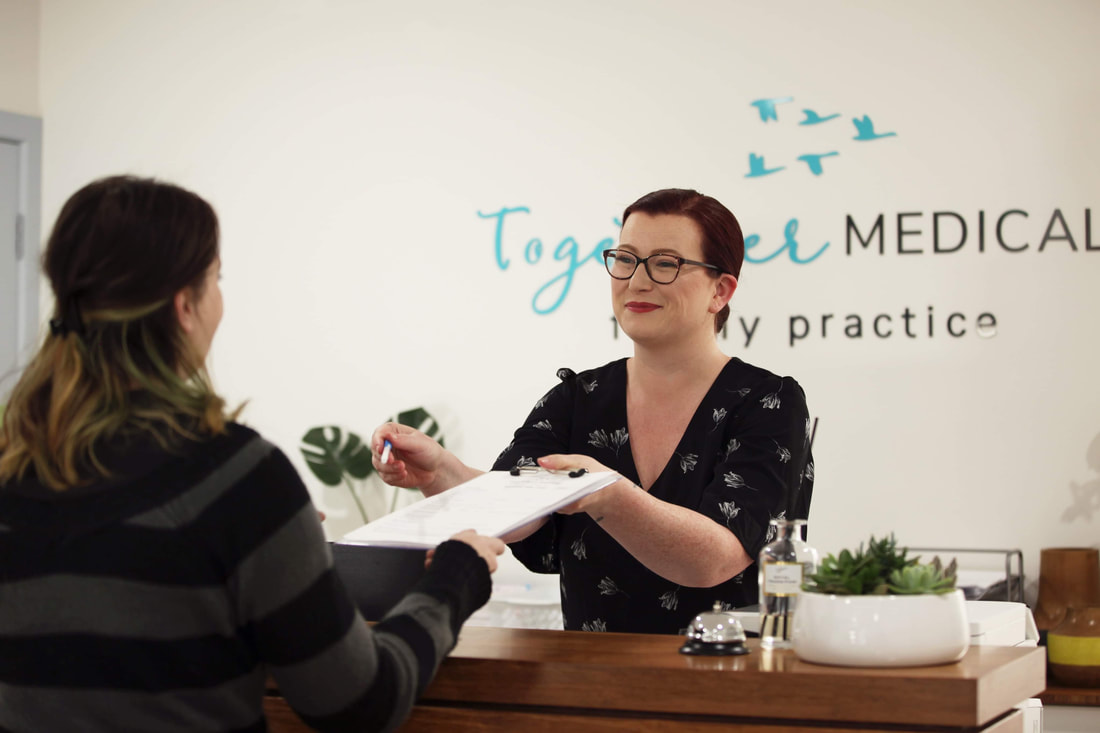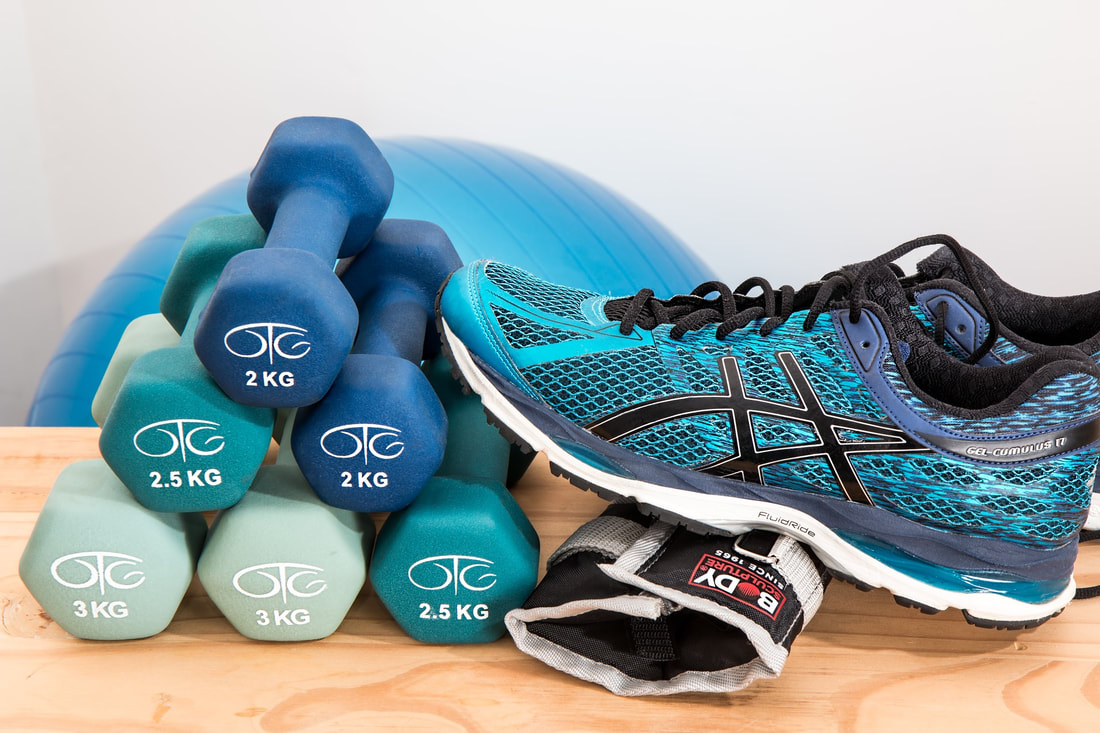|
Have you ever had a massage at a day spa before? If not, you might be wondering whether a massage at a spa is similar to a massage you receive in a clinic setting. One of our myotherapists, Emily, has experience in both a day spa setting and a clinical setting. So today, she’s sharing with us the similarities and differences, as well as why you might opt for one over the other. Why you seek out a treatment
For the most part, people who seek out a spa massage treatment want to feel great. They want to enjoy a massage that relaxes them, but usually aren’t looking for any other outcome. On the other hand, people who seek out the services of a remedial massage therapist or myotherapist are looking for a specific outcome. When you book remedial massage or myotherapy, you generally want to alleviate symptoms such as pain, or at least prevent future pain and flares. The aim of a massage treatment As the reason for seeking treatment is different, it makes sense that the aim is also different. A spa massage therapist will aim to give you a massage treatment that feels good, relieve tension and helps you to feel more relaxed. A remedial massage or myotherapy session in a clinic will have specific goals and outcomes. This is because you will generally come in with an aim of having pain or an injury treated, managed and/or prevented. We will put together a treatment plan based on your needs and goals, and review that regularly. In a spa massage, there may be other treatments or tools involved such as hot stones or aromatherapy. Again, these are focused on relaxing you more and easing general stress and tension. On the other hand, remedial massage and myotherapy can involve a whole toolbox of techniques, depending on your needs. At Simple Wellness Myotherapy, we use dry needling, cupping, joint mobilisation, trigger point therapy, rehabilitation exercises and taping. Not everyone will need all of these in their treatment plan, but we can tailor your plan to your needs and goals. What to expect in a 60 minute spa massage Here is how a typical spa massage will run:
What to expect in a 60 minute clinic massage This is how a massage or myotherapy treatment runs at Simple Wellness:
Which is better – spa massage or clinical massage? It’s not really a competition because they are so different! If you’re just looking to treat yourself and enjoy a relaxing massage, there’s nothing wrong with a sneaky spa massage. Spa massage may also be preferable if you’re looking to have other beauty treatments. But if you’re dealing with pain, injury or significant tension, a clinical massage from a remedial massage therapist or myotherapist is best. Clinical massage is also better for preventing injuries and flare-ups of previous injuries and pain. Looking for a clinical massage? At Simple Wellness Myotherapy, we offer both remedial massage with our therapist Helvi and myotherapy with Emily and Mel. You can book an appointment with one of our practitioners here. If you've chosen to see a Myotherapist, theres a good chance that you've got a pain or injury that you're concerned about and you know that it needs more than just a bit of a massage. There are some cases where follow-up may not be needed. But for the majority of pain conditions or injuries, the best long term pain relief comes from a series of treatments specifically designed for you by your Myotherapist. Why do I want to see you for a follow-up treatment? Let me tell you all of the reasons!
Seeing how you responded to the treatment This one is pretty self-explanatory. When you receive a myotherapy treatment, you might respond well, or you might not. A follow-up allows us to check in and see how you recovered, and how the original problem is going. This lets us know which treatment techniques to keep using because they were effective for you, or which ones to drop from your treatment plan. Checking progress with at-home care and exercises Most clients receive either suggestions for at-home care and modifications and/or exercises. During your follow-up appointment, we can check in and see how these changes went for you. Found yourself struggling to do a particular exercise? We can prescribe an easier alternative until your strength or balance improves. Forgot how to do one of your stretches, or not sure if you’re doing it right? This is our opportunity to review it for you. Getting to the root cause of the original issue For most people, one treatment isn’t going to fix the issue completely. In most cases, there is an underlying cause that needs to be looked into. This is particularly important for those with chronic conditions and chronic pain. There are multiple contributing factors to chronic symptoms and pain. Unfortunately, we can’t address all of those factors in just one session! That’s why follow-up appointments can make all the difference. Helping you achieve long-term health goals Do you dream of running your first marathon? Or maybe you want to do an obstacle course with your friends? Perhaps you just want to chase the kids around the park and not pay for it later? Whatever your long-term goals are, we can work on them during a follow-up appointment. Follow-up sessions can really pay off when it comes to long-term goals, even if you experience chronic pain. One of my long-term clients with a chronic pain condition recently achieved her goal of going back to full-time work. She also goes to F45 several days a week – talk about smashing goals! Preventing future injuries Unfortunately, once you’ve had one injury, you are more vulnerable to future injuries. But we can help to minimise the risk of this occurring through follow-up sessions. During a follow-up, we can assess how strong and stable the surrounding muscles and joints are. Myotherapy treatments such as stretching, taping and exercises can all support the area while it heals and minimise the chance of future issues. Ensuring that your injury or symptom doesn’t warrant further investigation If you come in with some pretty impressive muscle tension or pain, it can be difficult to fully assess your situation. Your first session gives us a chance to release those muscles and reduce the pain. But in some cases, tension and pain can be covering up a red flag sign or symptom. With a follow-up, we have the chance to investigate your concerns further. If we do see any red flags, we can immediately refer you to your GP or specialist to get it sorted. Is it time for you to book your follow-up session? You can do that right here. We know that it’s good to move our bodies on a daily basis. But when we get injured, it’s a good excuse to chuck in the towel for a few weeks– right? Wrong! Exercise or at least some type of movement is an important part of your recovery process. Although it might not be good to go for a run 2 hours after you break your ankle (ouch!), you do want to incorporate movement as your body heals. Let’s look at why exercise is so beneficial, and how to include it safely. What are some of the general benefits of exercise?
So first up – why do we want to exercise on a regular basis? I’m glad you asked! There are so many benefits to exercise for your physical, mental and emotional wellbeing. Some of them include:
Exercise, injury and pain The old-school approach to pain was all about rest and inactivity. But now we know that movement done correctly is one of the best things you can do for pain. When it comes to pain and injury, research has shown that exercise can:
But there are also the indirect benefits. For example, exercise improves sleep, which is when your body does its best healing. If you’re not sleeping well, it will take you longer to heal. But if you use exercise to improve your sleep, it can boost your recovery. How to exercise safely after an injury Convinced that you need to move that body? Let’s go about this with safety in mind. Here are a few tips to get you started. Start slow. After an injury, there are a lot of complex processes going on. So the last thing your body needs is for you to try and run a marathon while it’s still healing! Begin with gentle movements, and work your way up over a period of weeks until you’re back to your pre-injury levels. Use your non-painful joints. If you have an injured upper body, use your lower body for exercising. If you’ve got an injured lower body, do some upper body exercises. Endorphins don’t stay in the one place – they are systemic. So if you’re moving non-sore parts, the endorphins will make their way around your body to the sore parts to help relieve the pain. Get a proper rehab program prescribed. This might not be necessary if you’ve only rolled your ankle or stubbed your toe. But if you have had a significant injury or are in significant pain, it’s best to get help. As a myotherapist, I can prescribe rehab exercises that build your body’s strength back up, and adapt exercises that might be causing pain. Your exercises will change throughout our treatment plan - we start from light, easy exercises while the pain or injury is acute, and work up to more challenging exercises to rebuild strength when your body is ready for it. Ready to book in a session? Head to the booking page here. Many people are already seeing a manual therapist such as a myotherapist or a chiropractor. But what you might not know is that you can see both! There are several benefits that come with seeing both a myotherapist and a chiropractor as part of your health strategy. Myotherapy Vs Chiropractic – What’s The Difference?
The main difference between myotherapy and chiropractic is their focus. Myotherapy focuses on muscle health, although it does include some supportive work for the joints. On the other hand, chiropractic has a strong focus on the spine and its impact on the whole nervous system, as well as treating other joints throughout the body. How Myotherapy And Chiropractic Can Work Together Chiropractors can adjust structural issues As a myotherapist, I am your go-to for muscle issues. And while myotherapy can include mobilising joints, sometimes it’s not enough to address a structural issue. Manipulating joints is a specialised skill and is out of a myotherapist’s scope of practice. That’s where a trusted chiropractor comes in. If your myotherapist thinks there is a structural issue that needs to be addressed, teaming up with a chiropractor can get you sorted. Soft tissue work can extend the results of an adjustment Maybe you’re already seeing a chiropractor regularly. Adjustments from your chiropractor can be great at the time. But many people feel like they slip back into the same uncomfortable position in no time. This is where working with a myotherapist can extend those results. We can have a look at any muscles that are encouraging your problematic positioning and help rebalance them. This can lead to longer-lasting results from your chiropractic sessions. Myotherapy can make it easier for your chiropractor to effectively adjust you If you have very tight muscles and connective tissue surrounding your spinal joints, it can sometimes be difficult to get those areas adjusted. By seeing me before an adjustment (either same day, or the day prior) a lot of my patients find their chiropractic treatment is more effective and less uncomfortable. Its definitely a satisfying feeling getting an adjustment that moves easily without feeling like muscle tension is stopping you getting the full benefit of your chiropractic session. Adjustments and home exercise can work together Another reason to combine myotherapy with your chiropractic care plan is including corrective exercises for the muscles. As a myotherapist, I can prescribe a personalised exercise plan that can strengthen a weak muscle, correct muscular imbalances and relieve pain over the long-term. Why is this a great approach? It means that instead of just treating the problem, you can work towards healing it. A combination can do wonders for spinal issues People who have spinal issues such as nerve impingement get more bang for their buck by working with a myotherapist and chiropractor. Myotherapy can reduce pain levels and muscle sensitivity using techniques such as massage therapy, cupping and muscle energy techniques. On the other hand, chiropractic can help with repositioning the vertebrae, which can reduce compression on the impinged nerve. Don't have a chiropractor you love? Let me make a recommendation! Dr Nadine Toussaint at Resonate Wellbeing in Ringwood is an amazing, gentle and caring chiropractor. To book in a myotherapy session, head to my booking page. To make an appointment with Nadine, jump onto the Resonate Wellbeing website. |
Meet Our Team
We have a team of great practitioners available 7 days a week at our Rowville clinic. Archives
July 2024
Categories
All
|
Got a question about Myotherapy?
Contact Mel by phone, email or Facebook
|
Simple Wellness Myotherapy & Remedial Massage Clinic
Shop 12B 150 Kelletts Rd Rowville VIC 3178 |
Phone us on
03 8204 0970 |





 RSS Feed
RSS Feed